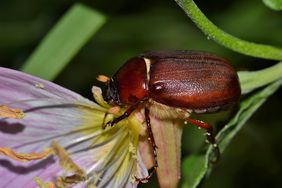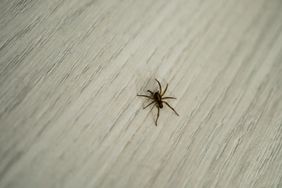:max_bytes(150000):strip_icc()/GettyImages-1587833536-67882255635d474d9b8f10718ec18bd6.jpg)
Getty Images
Fall armyworms (Spodotera frugiperda) are not a welcome visitor in the Southeast. They often appear in large numbers in late summer to early fall and make the ground appear as if it’s moving as they devour every bit of vegetation in their paths. “They will march across your lawn, just like an army,” says Clint Waltz, PhD, turfgrass extension specialist at the University of Georgia. “The adult moths are not a turf issue, but they lay eggs which become voracious caterpillars that can decimate a lawn and heavily damage certain types of turfgrasses.”
- Clint Waltz, PhD, is a turfgrass extension specialist at the University of Georgia.
Fall armyworms cannot survive winters in most of the Southeast, says Waltz. Instead, the moths hitch a ride every year on storms coming up from balmy tropical regions, including Central and South America, southern Florida, and southern Texas. In some years, their numbers are worse than others.
Knowing what fall armyworms look like and how to treat them is your best defense against these destructive pests. Although they attack a variety of crops and grasses, their favorites are bermudagrass and tall fescue. While bermudagrass usually can recover from an attack, surviving a fall armyworm invasion is iffy for tall fescue. “It’s particularly risky for tall fescue in years when the turf is already suffering from heat and drought stress,” says Waltz.
Identifying Fall Armyworms
Adult moths are ash-gray and about 1 ½-inches wide. The front wings are smaller and gray and brown, while the back wings are larger and white with a brown edge. The moths are active at night and may be seen near porch lights. Once the female moth lays eggs, the masses hatch in a few days, depending on temperature.
The newly-hatched larvae, or caterpillars, are pale and tiny with a black head, but they soon grow to 1 ¼ to 1 ½ inches long and are green to nearly black with stripes. These pests can develop from egg to larvae in a matter of weeks, so you can have multiple generations per year, which means you could be dealing with tens of thousands of these pests on a lawn, says Waltz.
Although they feed any time of day, you are most likely to spot fall armyworms in the early morning or late afternoon climbing up grass stems. You may even hear their munching! During the heat of the day, the caterpillars tend to hunker down close to the soil under the canopy of the grass, says Waltz.
Another subtle but telltale sign you may have fall armyworms is if you see flocks of birds or wasps in an area on your lawn. This may indicate that they’re feeding on the caterpillars, so inspect your turf, says Waltz.
:max_bytes(150000):strip_icc()/GettyImages-537549928-eb9e1e7ad772436ca2d134d40558f124.jpg)
Getty Images
How To Get Rid Of Fall Armyworms
Fortunately, these pests are not difficult to control, says Waltz.
- Act fast. As soon as you see these caterpillars, take action. Don’t wait until the next day or chances are they have already eaten their way across your lawn, says Waltz.
- Use an insecticide containing carbaryl or bifenthrin. Although products may be available in dust, granular form or sprays, choose a spray. “You’ll get better coverage on the leaf surface with a liquid,” says Waltz. These are often available in a ready-to-use form that attaches to your garden hose. Read and follow the label.
- Spray in the late afternoon or early evening to reduce the amount of chemical broken down by sunlight.
- Re-treat the area, if necessary, if another generation pops up. These insecticides do not have a lengthy residual period, so you may need to do another application if you see signs of a new infestation in a few weeks, says Waltz.
- Talk to a professional lawncare company about long-term control. Products such as chlorantraniliprole may not be available to the homeowner but can provide longer residual control for these insects.
- Keep an eye on newly-established sod lawns. These caterpillars seem to be particularly attracted to fresh sod, so inspect new sod lawns regularly or have your lawn treated with a long-acting insecticide by a professional lawncare company.
Preventing Fall Armyworms
There’s no way to predict what each year will bring, whether it’s a few fall armyworms or a full-scale invasion. But if your lawn has been attacked in previous seasons, consider having a professional lawncare company use a long-acting insecticide as a preventive measure so you won’t have to re-treat several times per season, says Waltz.
Also, be aware of what these insects look like and how to treat them. In years with multiple tropical storms that track across your region, it’s worth paying attention and inspecting your lawn regularly to look for these voracious caterpillars, says Waltz.
:max_bytes(150000):strip_icc()/Arricca-Elin-SanSone-ecbb9f10444d4097a972dc07d77f56ec.jpg)











